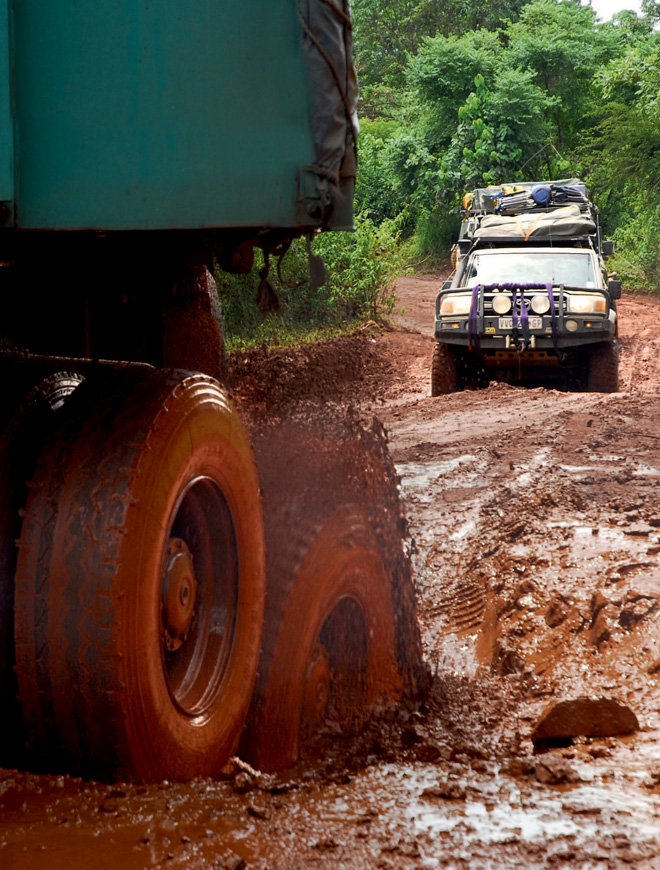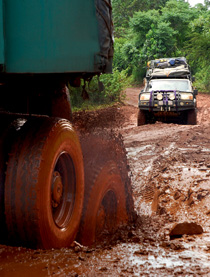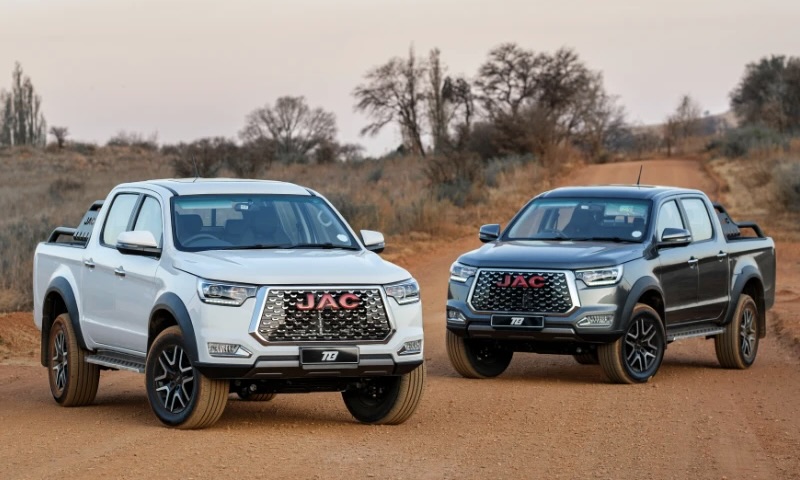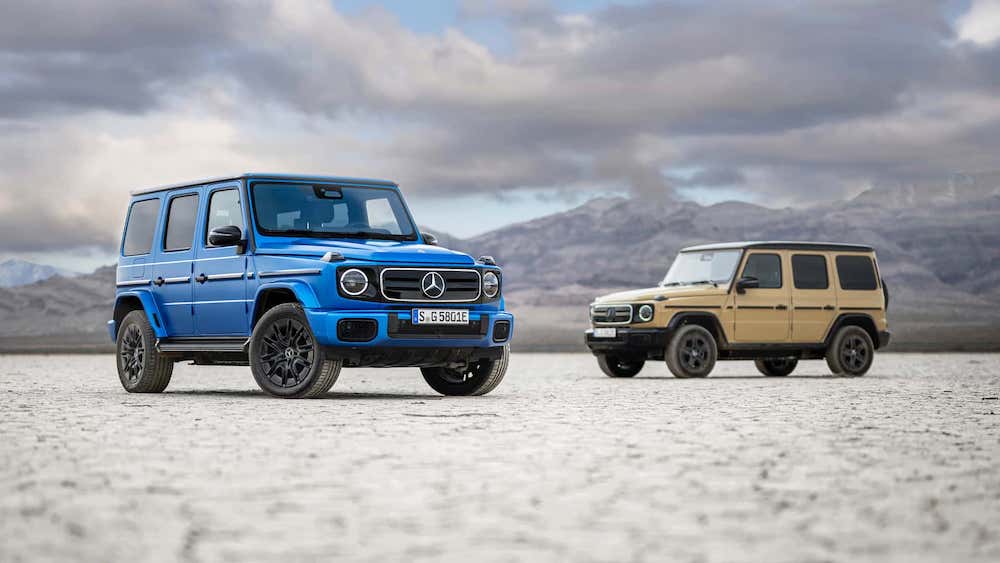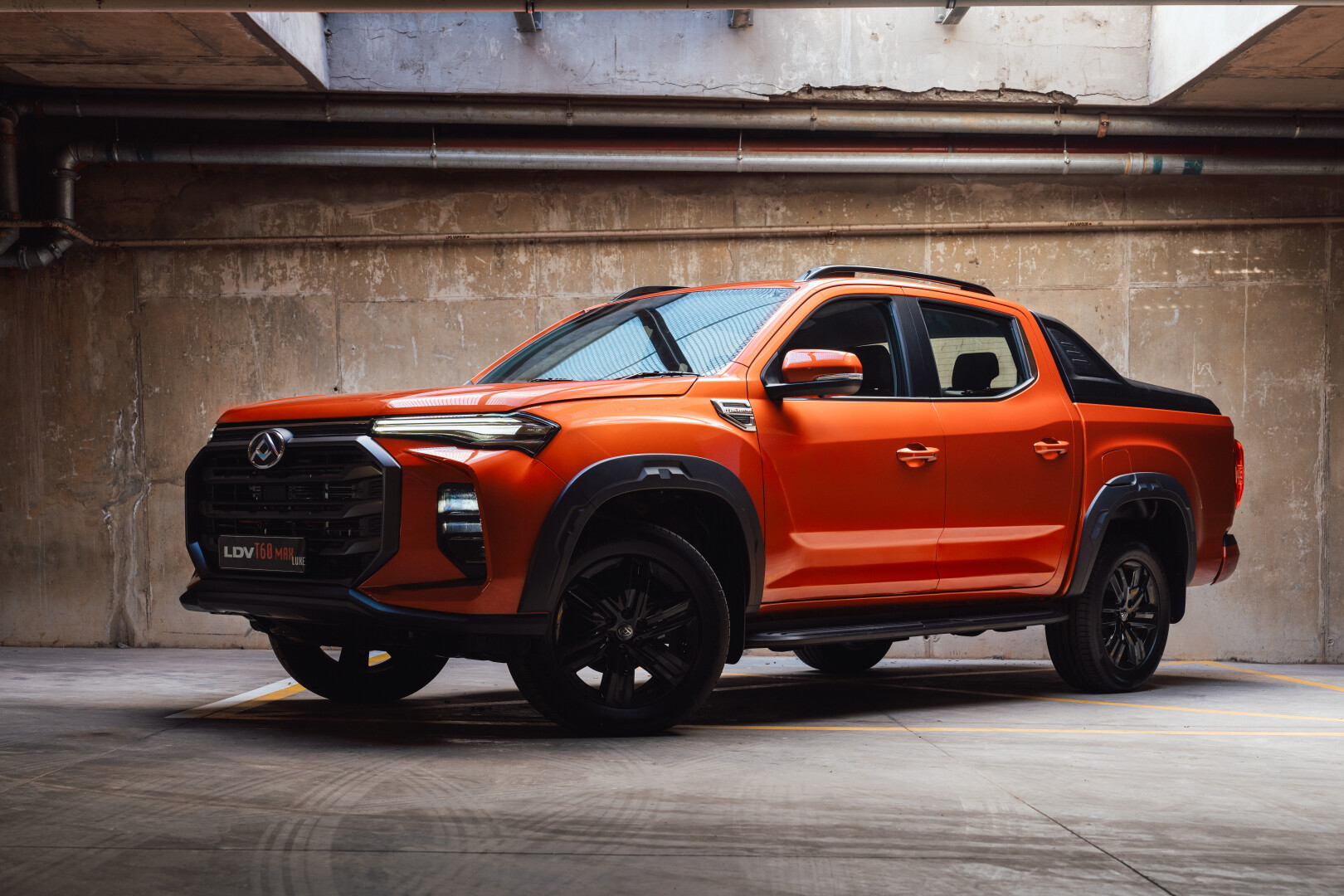Text: Johan Badenhorst
Photographs: Stefan Sonnekus
Some people do have vision. While the rest of the Voetspore team camped next to wreck of Pelican 16, cameraman Lourens Human set up his stretcher inside the Shackleton. When the wind started pumping at 2am that morning, Lourens was the only one to have a good night’s rest. The rest of us were covered in sand.
By 7am the wind was blowing even harder. Boiling water on a gas burner was only possible within the confines of Pelican 16.
And then a visitor arrived. In camouflage gear, in a Land Cruiser bakkie with a massive machine gun mounted on the rear. He wanted to speak to me.
It turned out his name was Mauloud Selma, the leader of the Polisario “rebel” movement in the Aguanit region. But he wasn’t irate at all. Instead he was merely disappointed that he didn’t know we were heading his way. He would have loved to offer us his protection and hospitality, and assistance in case anything went wrong. Turns out South Africans are very welcome here!
We were soon underway, on the way to Schalk van der Merwe’s guesthouse in Zou?rat. After stopping over at a salt mine, and a well where up to 500 camels gather to drink, we arrived in Zou?rat. It was time to spoil ourselves: there were hot showers! And good food and company too.
The next day we headed south, towards Atar. But first, a deviation, to the second largest rock in the world, at Ben Arnina. And what a detour it turned out to be! With Ben Arnira almost on the horizon, the soft dunes started.
Out came all the recovery kit as the vehicles took turns at getting stuck. It took three hours to complete the last stretch.
We arrived at the rock at 5pm. It was as impressive as we thought it would be. But now we were behind schedule, so we had a WOESTYNBERAAD, or desert meeting. It was decided to push on to Atar, which we reached at 11pm. We found refuge at Bab Sahara and after a hot shower to get rid of the sand, slept in Bedouin tents.
After a lazy start and some running repairs to the vehicles, we headed towards Adrar Plato, via a spectacular mountain pass. We drove on the plateau for 120km, with no vegetation. At least the road was good.
Then we came across the ruins of the Ouadane, an Islamic holy city. After a truly fascinating tour and after drinking about a litre of water each in the searing heat, we headed into the desert to our camp for the night.
The next morning we were on our way as the sun came up. And it was a tough going through the deceptive desert sand. Out came the kinetic straps again, the winches earned their keep, and we drank several litres of water in the more than 40C heat. We finally arrived at Chinguetti at 1pm.
But we didn’t have time to relax. We had to get to Nouakchott, finally arriving at 10pm. It was now routine to stay over at one destination for two nights, just to get our lives and the equipment sorted out again.
The next evening, after an easy day, we braaied fish bought from the local market on the coals. It was our last night in Mauritania. And surprisingly, we were sad to move on.
The Senegal border lies 300km south of Nouakchott, and we were strongly advised not to use the Rosso border post. That’s supposedly where crooks and corrupt officials gather. So we headed to an alternative border crossing, the road there going through a bird sanctuary. The last 60km to the post is gravel, and so we came across our first police checkpoint. Where euro notes did the talking.
Three-and-a-half hours later we had crossed into Senegal, but our wallets had been relieved of a total of about R4920. This included entry to the bird sanctuary (R660), Mauritanian passport control (R660), Mauritanian vehicle fee (R330), community tax (R66), toll fee for using the bridge over Senegal River (R330), Senegal customs fee (R330), and third party insurance (R2340).
The change of scenery was remarkable… no more desert, but trees and plants. No more donkeys, but horse-drawn carriages. And it was cooler too.
At sunset we arrived at the famous Zebra Bar campsite, and had a wonderful prawn curry there. It was the end of an exhausting day.
The next day we explored the Saint Louis area. It was hectic, to say the least. Hordes of people (some friendly, other downright rude), police, markets, beautiful old buildings, bridges, scenes of chaos… we were happy to return to the calmer sanctuary of Zebra Bar that evening.
After a celebratory dinner (the Bulls won the Super 14 that day!), our “Paris-Dakar” day dawned. We were heading for Lac Rose, the finishing point of the famous rally raid that, sadly, is now run in South America.
So on to the beach we went, with 140km to cover to the Pink Lake, all along the coast. When we finally arrived, a group of South Africans was there to welcome us… with biltong, boerewors, pancakes, wine, and newspapers and magazines from back home!
That night we feasted on boerie rolls (boerewors rolls) – and it was probably the best we have ever had.
The next day we explored the city of Dakar. We were warned that some inhabitants can be quite aggressive… and we soon experienced that first hand! Lourens was rudely accosted by a couple of people who claimed he filmed them, and demanded money. When more people joined the fray, we got out of there.
Dakar itself is quite a beautiful and modern place, and not the dump we had expected to find. After an interesting day exploring, we ended up with more South Africans, who treated us to lamb chops, boerewors, PAP and sauce. Divine!
Another day of sightseeing followed, this time to the island of Goree. This used to be the hub of the African slave trade. It’s not a nice place, but a must-visit just to understand how cruel people used to be, and probably still are. It made a lasting impression.
The next morning we pointed the Cruisers’ noses east. We would only see the sea again in a month’s time. After 600km of a road going from bad to good to bad to worse to bad to good again, we arrived at the little town of Goudiry. As the sun set, the temperature needle was still hovering around 40 degrees C.
It was our last night in Senegal.
Next month: The Voetspore team tackles Mali, on a two-week trek through the country. Soaring temperatures and storms keep the team on their tows, as they come away (mostly) impressed with this interesting and diverse place.
Where on earth?
If you want to follow the progress of the Voetspore team, you can now do so via Google Earth. Visit www.voetspore.co.za, select the link “waar reis ons,” and follow the Google Earth links. The website also features daily updates on the team’s progress, photos, and you can send the team a message.
